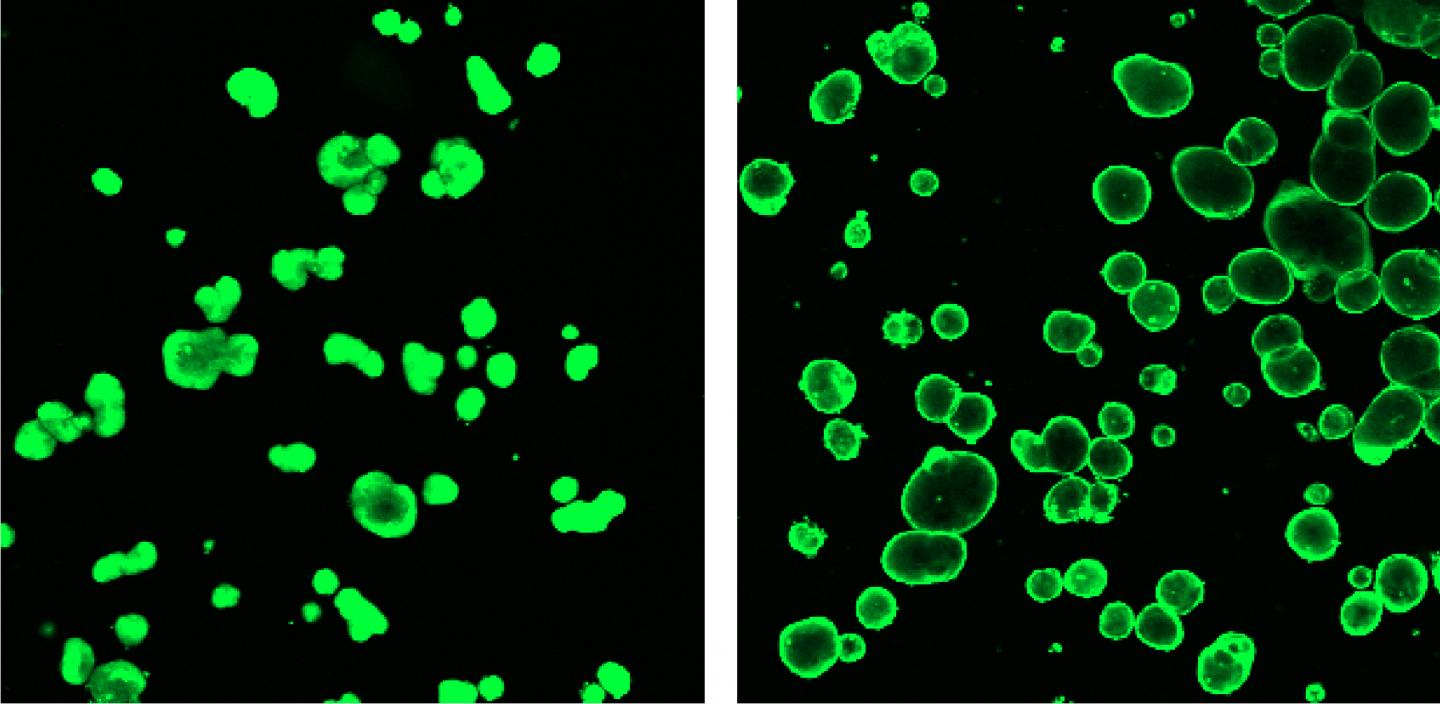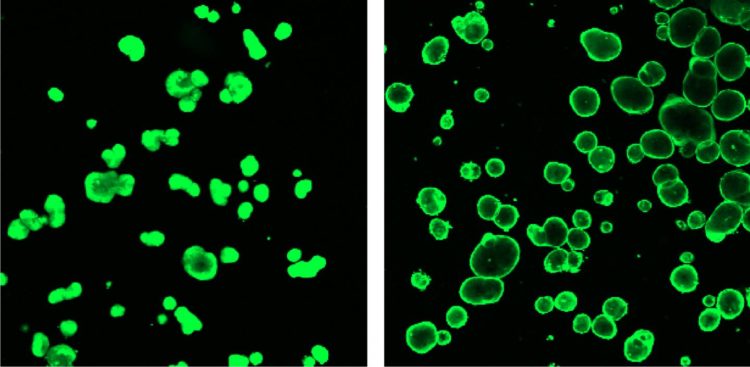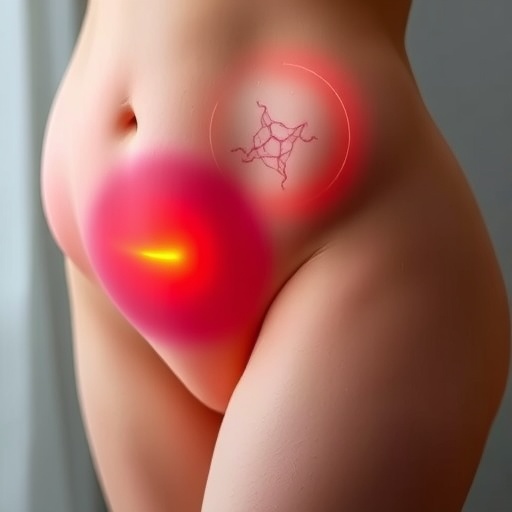
Credit: Eyleen de Poel en Maarten Geurts, copyright UMC Utrecht and Hubrecht Institute
Utrecht, The Netherlands, 20th of February 2020. While the genome editing tool CRISPR/Cas9, developed in 2012, cuts a mutation out of a gene and replaces it with a gene-piece, a newer type of CRISPR, called base-editing, can repair a mutation without cutting the DNA. Therefore, genome editing using base-editor is considered safer. Scientists from the research groups of Hans Clevers (Hubrecht Institute) and Jeffrey Beekman (UMC Utrecht) show for the first time that this base-editing can safely cure cystic fibrosis in stem cells derived from patients. The results of this study were published in Cell Stem Cell on the 20th of February.
In 2018 a new CRISPR-enzyme was developed that makes the CRISPR technique more precise and less error-prone, according to biologists Maarten Geurts (Hubrecht Institute) and Eyleen de Poel (UMC Utrecht). Maarten: “In traditional CRISPR/Cas9 genome editing a specific piece of the DNA is cut out resulting in DNA damage. This is done with the aim that the cell repairs this cut using a lab-made piece of ‘healthy’ DNA. However, in the new CRISPR-technique, called base editing, the Cas-part is altered in such a way that it no longer creates a cut, but still detects the mutation. So, instead of creating a cut and replacing the faulty DNA, the mutation is directly repaired on site, making this a more effective genome editing tool.” The current research shows that this new version of CRISPR/Cas9 can be safely and effectively applied in human stem cells.
Miniguts
The Hubrecht Organoid Technology foundation and the UMC Utrecht have generated a biobank consisting of intestinal organoids. These are tiny versions of the gut, that are established in the lab using the stem cells of cystic fibrosis (CF) patients. The miniguts are used for disease modeling and the development of new therapies. The biobank was set up together with many CF centers across Europe and the Dutch CF Foundation (NCFS). In this study, the miniguts were used to test whether the new base-editing technique can be applied in human stem cells. Maarten explains how this exactly works: “CF is caused by a mistake, a mutation, in the CFTR-gene leading to malfunctioning of the gene. As a consequence, the mucus in many organs, including the lungs, is less hydrated, resulting in mucus build-up and organ failure. With the new base-editing technique the mutation in the CFTR-gene can be detected and repaired without creating further damage in the genome.”
Even though this research shows that this novel CRISPR tool is effective in the lab, this does not mean that patients can already benefit from it. Eyleen: “This research represents a big step towards genetic repair of diseases in patients. However, a big question that remains is how to deliver the CRISPR-enzyme to the appropriate organs in the patient. Cystic fibrosis might also not be the most suitable disease to treat with CRISPR, as many organs are affected by the disease. Currently, the first medical applications with CRISPR gene editing are showing impressive clinical effects in diseases that affect a single organ or tissue such as sickle cell anemia. Further research is needed before the base-editor can be used for clinical application. However, in part due to this study, the first clinical applications may already happen in the coming five years.
###
Publication
CRISPR-based adenine editors correct nonsense mutations in a cystic fibrosis organoid biobank. M.H. Geurts*, E. de Poel*, G.D. Amatngalim, R. Oka, F.M. Meijers, E. Kruisselbrink, P. van Mourik, G. Berkers, K.M. de Winter-de Groot, S. Michel, D. Muilwijk, B.L. Aalbers, J. Mullenders, S.F. Boj, S.W.F. Suen3, J.E. Brunsveld, H.M. Janssens, M.A. Mall, S.Y. Graeber, R. van Boxtel, C.K. van der Ent, J.M. Beekman†, H. Clevers†. Cell Stem Cell 2020.
About the Hubrecht Institute
The Hubrecht Institute is a research institute focused on developmental and stem cell biology. It encompasses 23 research groups that perform fundamental and multidisciplinary research, both in healthy systems and disease models. The Hubrecht Institute is a research institute of the Royal Netherlands Academy of Arts and Sciences (KNAW), situated on Utrecht Science Park. Since 2008, the institute is affiliated with the UMC Utrecht, advancing the translation of research to the clinic. The Hubrecht Institute has a partnership with the European Molecular Biology Laboratory (EMBL). For more information, visit http://www.
About University Medical Center Utrecht
University Medical Center Utrecht (UMC Utrecht) belongs to the largest public healthcare institutions in the Netherlands and is an internationally leading healthcare provider, medical school and research institute that is exciting for its people, attractive to talent and embodies a culture of teamwork, innovation, sustainability and a competitive spirit. As a patient-centered organization, its 11,000 employees are dedicated to prevent disease, improve healthcare, develop new treatment methods and refine existing ones, with quality and patient safety as cornerstones. For more information, visit http://www.
Media Contact
Melanie Fremery
[email protected]
31-683-596-548
Related Journal Article
http://dx.





